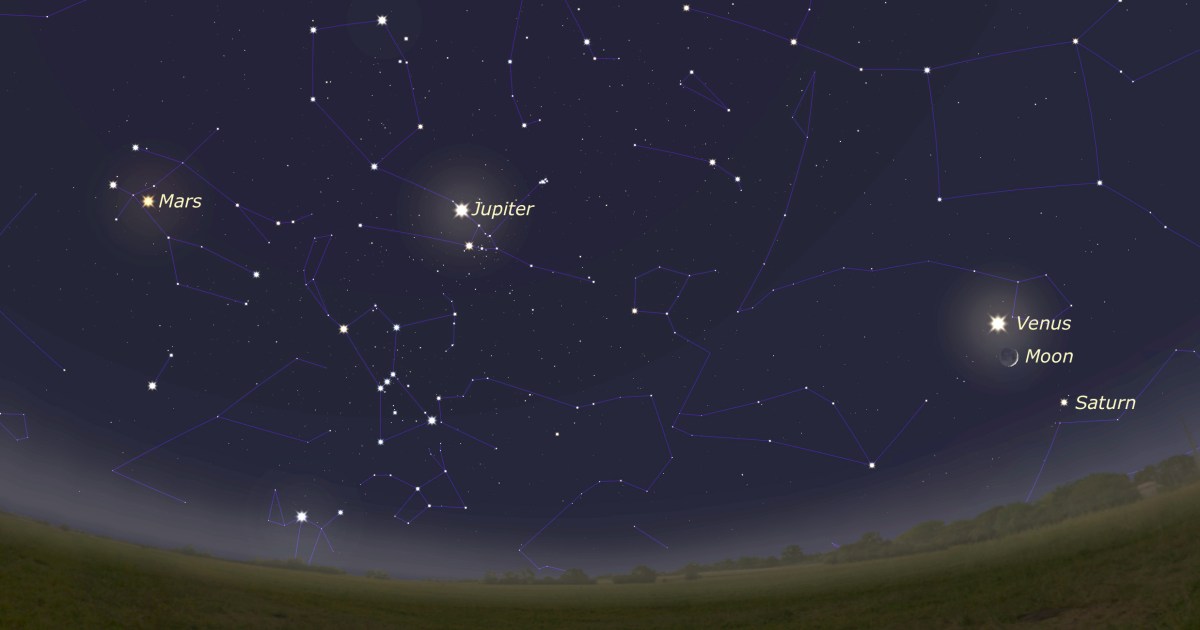This week sees a special event for stargazers, as there will be a planet parade in the skies. Four planets plus the moon will be visible in a line, making this a great opportunity for anyone interested in doing some stargazing.
Venus, Mars, Jupiter, and Saturn will all be visible in the night sky, and the moon will be almost full and passing by each of the planets in turn throughout the week. The event, also known as a planetary alignment, happens when the planets appear by chance in a row. Although there isn’t anything particularly unusual about this happening, it does make for an exceptional time to see multiple planets — even with the naked eye.
“The parade of the planets in 2025 is one of the best line-ups we’ve had for 45 years,” said Robin Scagell, chair of National Astronomy Week, an event planned to coincide with the planet parade. “Not since April 1980, when Mars was close and we could see Jupiter, Saturn, and Venus, has there been such a fantastic opportunity to see half the solar system in all its glory.”
Please enable Javascript to view this content
How many planets will be visible depends on where the planets appear over the horizon, weather conditions, and what equipment you have available. “For most observers to see a planet with the naked eye, it needs to be at least a few degrees above the horizon, and 10 degrees or higher is best,” NASA explains. “This is crucial because Earth’s atmosphere near the ground dims celestial objects as they rise or set.”
Venus and Saturn are typically very bright and easy to spot without any aids, but to get the best view of the other planets you’ll need to have very clear skies or access to binoculars or a telescope. With these aids, you may even be able to see Uranus and Neptune in the night sky as well.
If you can’t get a good view of the planets for yourself, however, then you can still watch the event online. You can tune into the National Astronomy Week livestreams which will include footage of the planets plus expert commentary and astronomy-related activities.
